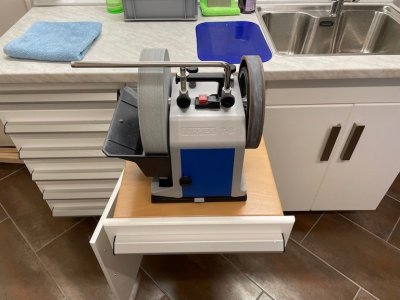syntheticracer
Member
- Joined
- Sep 19, 2018
- Messages
- 3
Im building a new shop and looking for tool layout options. The main shop will be 30x30 and additional space outside the main shop for other accessories listed below.
The main shop will need to include space for the following:
16 ft miter station
52 in table saw with 32x52 outfeed table
50x20 sanding center
53x27 belt sander
36x38 band saw
92x40 jointer
36x36 planer
30x20 router table
6ft x 10 ft area for CNC
Dust Collector and air compressor will be located in another room
Drill press and sharpening center will be located in another room
Prefer to have all tools on wheels for easy movement (if needed)
Air ducting will be installed once shop layout is finalized
Thanks for any and all guidance
The main shop will need to include space for the following:
16 ft miter station
52 in table saw with 32x52 outfeed table
50x20 sanding center
53x27 belt sander
36x38 band saw
92x40 jointer
36x36 planer
30x20 router table
6ft x 10 ft area for CNC
Dust Collector and air compressor will be located in another room
Drill press and sharpening center will be located in another room
Prefer to have all tools on wheels for easy movement (if needed)
Air ducting will be installed once shop layout is finalized
Thanks for any and all guidance



